- Componentes del kit de reactivos
| Especificaciones | 50t | 100t |
| Gato. No. | SN0303 | SN0304 |
| Columnas de extracción de ARN (colocar) | 50 (colocar) | 100 (colocar) |
| ADNasa I | 1ml | 1ml |
| 10 × Reaction Buffer | 1 ml | 2 ×1ml |
| Trizol Buffer | 50 ml | 2 × 50 ml |
| Tampón de eliminación de inhibidores | 30 ml | 2 × 30 ml |
| Tampón de lavado 1 | 15 ml | 2 × 15 ml |
| Tampón de elución | 20 ml | 2 ×20 ml |
| Manual de instrucciones | 1 | 1 |
- Almacenamiento
Este kit de reactivos debe almacenarse a temperatura ambiente. (15-25℃) in a dry environment and is stable for 12 meses. DNase I contains a preservative, permitiendo el transporte a temperatura ambiente, pero para almacenamiento a largo plazo, debe mantenerse a -20 ℃.
- Instrucciones para usar el kit de reactivos
3.1 Este kit está destinado a fines de investigación de biología molecular y no debe utilizarse para el diagnóstico o tratamiento de enfermedades..
3.2 Algunos componentes del kit contienen irritantes.; es recomendable tomar las precauciones necesarias (como usar ropa y gafas protectoras).
3.3 El uso de este kit requiere equipo adicional como una centrífuga de alta velocidad., baño de agua (baño de metal), mezclador Vortex, etanol anhidro, nitrógeno líquido, cloroformo, agua desionizada estéril, y tubos EP.
- Introducción al kit de reactivos
This RNA purification kit utilizes the traditional TRIzol combined with column membrane method for the rapid purification of plant, animal, tejido, celúla, microbial RNA, and fungal hyphae RNA. It is suitable for most species. This RNA purification kit can be applied to plant tissues exceeding 100 mg. The RNA extracted with this kit has extremely low DNA content. If sensitivity to DNA in experiments is a concern, it is recommended to use DNase I digestion on the column.
The RNA Fast Purification Kit can extract total RNA from samples (Incluyendo ARN nuclear y ARN citoplasmático.) dentro 1 hora. The extracted RNA can be directly used for RT-PCR, transferencia Northern, y otras aplicaciones.
- Principios y procedimientos experimentales
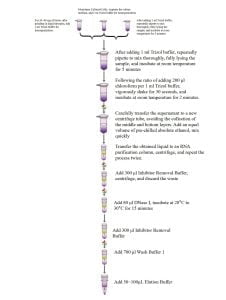
- Proceso de extracción
Precauciones antes de comenzar el experimento.:
A. Antes de usar, add the specified amount of absolute ethanol to LavarBuffer 1 according to the label on the reagent bottle, and check the box on the label to indicate that absolute ethanol has been added.
B. El tampón de elución es un 0.1x solución TE que contiene un mínimo de EDTA. Si el EDTA afecta a experimentos posteriores, se recomienda reemplazar el tampón de elución con agua desionizada estéril.
- Procesamiento de muestras:
A. Tejido: If fresh materials cannot be used immediately, place them in liquid nitrogen and store them at -80°C. Los materiales secos se pueden almacenar a temperatura ambiente.. Grind 30~80 mg of tissue in liquid nitrogen and add 1 ml Trizol buffer for homogenization.
B. Monolayer Cultured Cells: Aspirate the culture medium and add 1 ml Trizol buffer for homogenization.
C. Cell Suspension: Centrifuge to collect cells and add 1 ml Trizol buffer for homogenization.
2. After adding Trizol buffer to the sample, mix thoroughly by pipetting, allow complete sample lysis, e incubar a temperatura ambiente durante 5 minutos.
3. Add chloroform in a ratio of 200 μl per 1 ml of Trizol buffer, vigorously shake for 30 segundos, e incubar a temperatura ambiente durante 2 minutos.
4. Centrifuge the lysate at 4°C, 12,000 rpm para 10 minutos. RNA will be present in the upper aqueous phase.
5. Transfiera con cuidado el sobrenadante a un nuevo tubo de centrífuga., avoiding the collection of the middle and bottom layers. (Nota: Aproximadamente 400 Se pueden transferir µl de líquido., which may be less for some species.)
6. Add an equal volume of pre-chilled absolute ethanol, mix quickly. (Por ejemplo, agregar 400 μl de lisado, agregar 400 μl of absolute ethanol. Si el volumen del lisado es menor que 400 µl, reduce the amount of absolute ethanol proportionally. A slight precipitate may form after adding ethanol, but it does not affect subsequent experiments.)
7. Transfer the obtained liquid to an RNA purification column (aproximadamente 650-700 μl per time), centrifuge at more than 8,000 rpm para 1 minuto, desechar los residuos recogidos, y vuelva a insertar el tubo de recolección en la columna de purificación para el siguiente paso.
8. Repita el paso 7, adding the remaining liquid to the RNA purification column, centrifuge at more than 8,000 rpm para 1 minuto, discard the waste and the collection tube.
9. Place the RNA purification column in a new collection tube, agregar 300 μl of Inhibitor Removal Buffer, centrifuge at more than 8,000 rpm para 1 minuto, desechar los residuos, and reinsert the RNA purification column into the tube for the next step.
10. Agregar 80 μl of DNase Iworking solution to the RNA purification column, incubate at 20°C to 30°C for 15 minutos. (Prepare DNase I working solution: 62 μl RNase-Free Water, 8 μl 10× Reaction Buffer, y 10 μl DNase I, make up to 80 μl DNase I working solution.)
11. Agregar 300 μl of Inhibitor Removal Buffera la columna de purificación de ARN, centrifuge at more than 8,000 rpm para 1 minuto, desechar los residuos, and reinsert the RNA purification column into the tube for the next step.
12. Agregar 700 μl of Wash Buffer 1a la columna de purificación de ARN, centrifugar en 14,000 rpm (20,000×g) para 2 minutos, extend the centrifugation time if needed for a drier membrane. (Nota: Confirm the addition of ethanol to Wash Buffer 1; ethanol presence significantly affects subsequent experiments. Ensure the membrane is dry after centrifugation before elution. Desechar los residuos y el tubo de recogida.. Después de usar el tampón de lavado 1, the membrane on the RNA purification column should only have a slight color. Carefully remove the RNA purification column after centrifugation, ensuring it does not touch the collection tube to avoid ethanol contamination.)
13. Coloque la columna de purificación de ARN en un tubo de centrífuga nuevo., drip 100 μl of Elution Buffersobre la membrana, incubar a temperatura ambiente durante 5 minutos (15°C to 25°C), and centrifuge at more than 8,000 rpm para 1 minuto. (Nota: Eluting RNA with 50 μl of Elution Buffer can increase RNA concentration but decrease total RNA yield.)
14. Repeat the previous step. (Nota: A new centrifuge tube can be used to collect the RNA eluted the second time or continue using the original collection tube to collect RNA.)
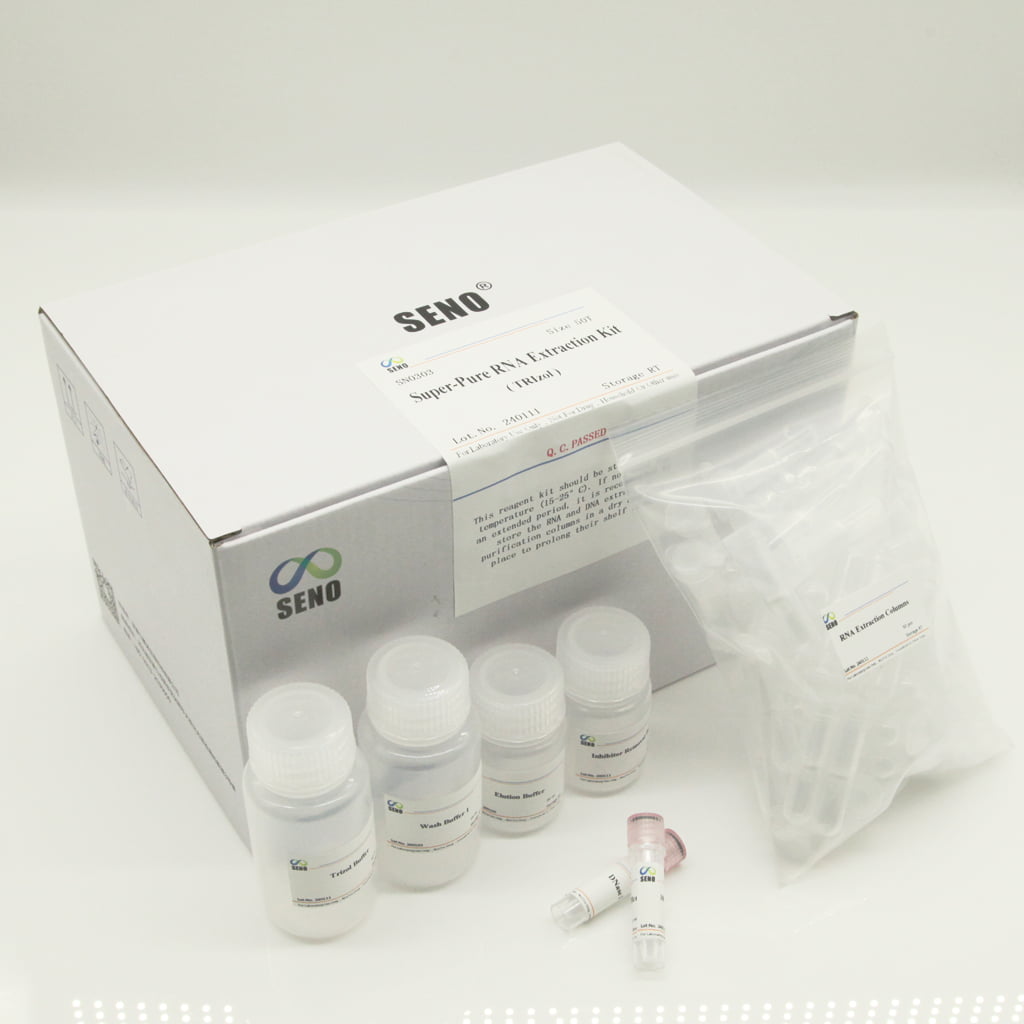
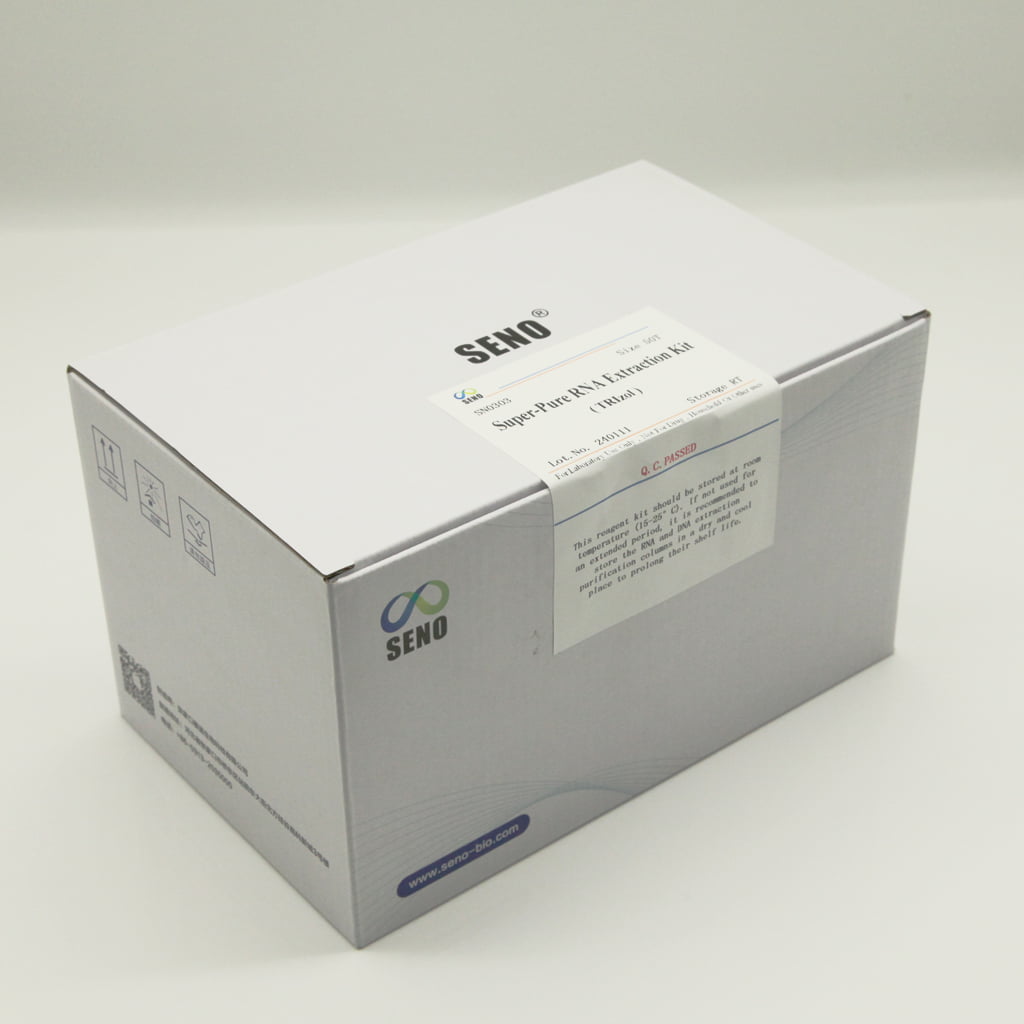
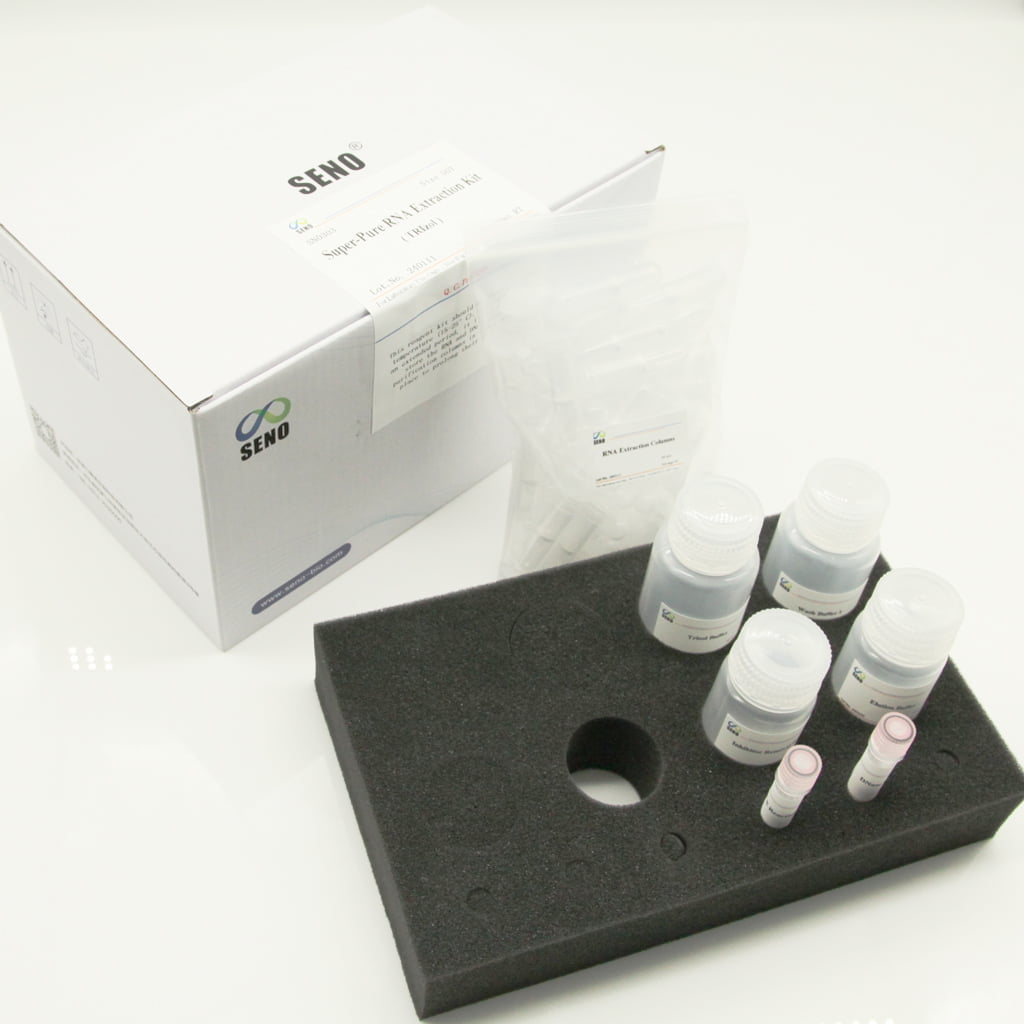
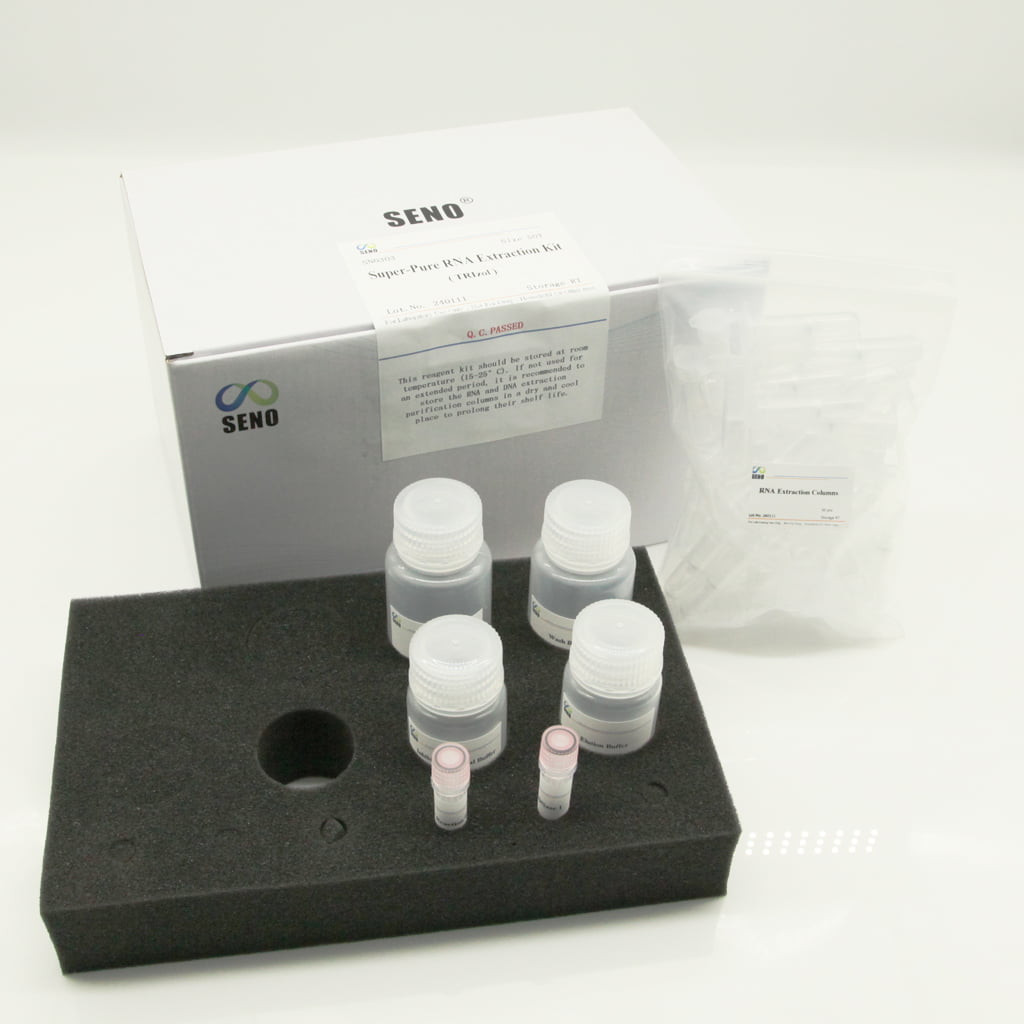
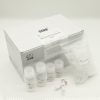
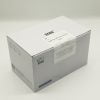
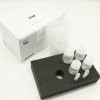
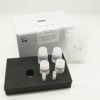
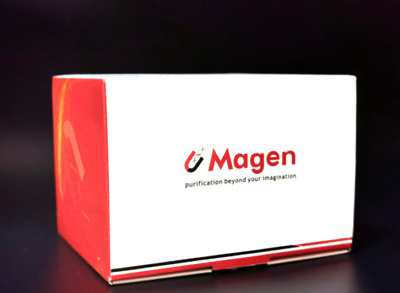

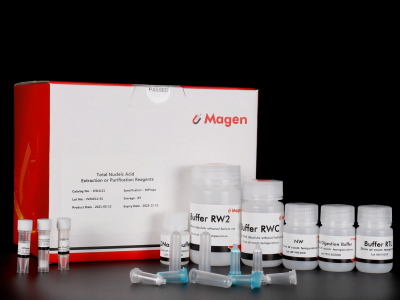
Reseñas
Aún no hay reseñas.